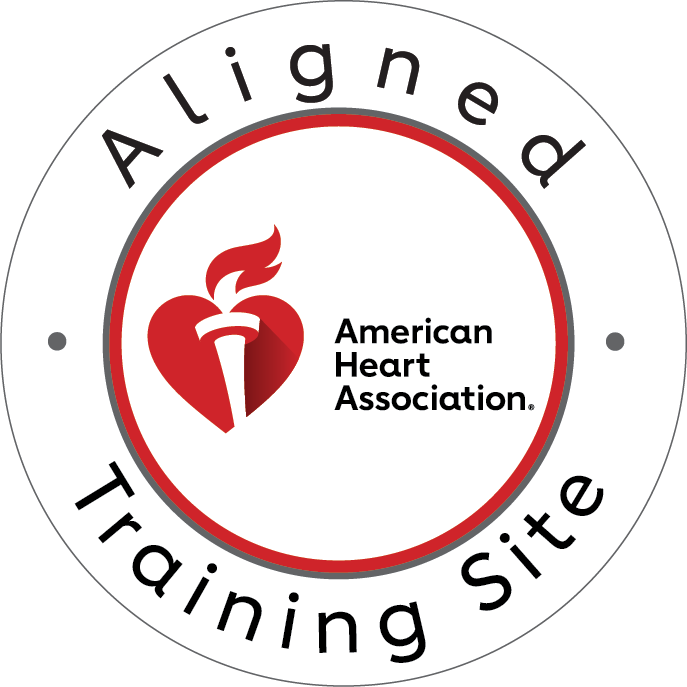Pediatric Advanced Life Support (PALS) certification is a critical credential for healthcare providers who work with children and infants in emergencies. At the heart of this certification lies a fundamental requirement: the mastery of essential airway intervention skills. Ensuring proficiency in managing the pediatric airway is not only a key component of PALS training but also a crucial determinant of successful patient outcomes.
I. Understanding the PALS Airway Intervention Requirements
The PALS curriculum, developed by the American Heart Association, emphasizes the importance of airway management as a fundamental skill for healthcare providers. From initial assessment to coordinated intervention, the ability to promptly and effectively address airway compromise is a central focus of the PALS certification process.
Specifically, the PALS airway intervention requirements cover a range of essential techniques, including:
- Bag-valve-mask ventilation
- Oropharyngeal and nasopharyngeal airway insertion
- Endotracheal intubation
- Supraglottic airway device placement
Demonstrating competence in these airway management skills is not only a prerequisite for PALS certification but also a critical step in ensuring the delivery of high-quality, lifesaving care to pediatric patients.
The rationale behind this emphasis on airway interventions is well-founded. Respiratory emergencies, such as airway obstruction, respiratory failure, and cardiac arrest, are leading causes of pediatric morbidity and mortality. By equipping healthcare providers with the knowledge and practical abilities to effectively manage the pediatric airway, the PALS curriculum aims to minimize the risk of adverse outcomes and improve the chances of successful resuscitation.
II. Establishing a Solid Foundation in Airway Anatomy and Physiology
To effectively master the airway intervention techniques required for PALS certification, healthcare providers must first develop a thorough understanding of pediatric airway anatomy and respiratory physiology. The unique anatomical features and physiological differences between children and adults can significantly impact the approach to airway management.
For instance, the pediatric airway is notably smaller, more flexible, and often more susceptible to obstruction due to the relatively larger tongue and shorter trachea. Additionally, children have higher metabolic rates and lower functional residual capacity, rendering them more vulnerable to the negative effects of hypoventilation or apnea.
By building a strong foundation in these foundational concepts, healthcare providers can better anticipate potential challenges, adapt their interventions accordingly, and ensure the safest possible outcomes for their young patients.
III. Mastering Essential Airway Intervention Techniques
With a solid understanding of pediatric airway anatomy and physiology, healthcare providers can then focus on developing proficiency in the essential airway intervention techniques outlined in the PALS curriculum. Mastering these skills is crucial for successfully managing respiratory emergencies and ensuring the best possible outcomes for pediatric patients.
Bag-Valve-Mask Ventilation
One of the foundational airway interventions covered in PALS is bag-valve-mask (BVM) ventilation. Healthcare providers must demonstrate the ability to effectively deliver breaths using a manual resuscitation bag and properly fitting mask, ensuring adequate oxygenation and ventilation for the patient.
Oropharyngeal and Nasopharyngeal Airway Insertion
The PALS curriculum also emphasizes the proper insertion and utilization of oropharyngeal and nasopharyngeal airways. These adjuncts can help maintain an open airway, prevent obstruction, and facilitate effective ventilation when used appropriately.
Endotracheal Intubation
For more advanced airway management, PALS-certified providers must be proficient in endotracheal intubation. This technique involves the insertion of a specialized tube directly into the trachea, providing a secure, protected airway and enabling mechanical ventilation when necessary.
Supraglottic Airway Devices
In addition to endotracheal intubation, the PALS certification also requires the demonstration of competence in the use of supraglottic airway devices. These alternative airway management tools, such as laryngeal masks, can serve as valuable alternatives or adjuncts to intubation in certain pediatric emergency scenarios.
Mastering these essential airway intervention techniques requires a combination of theoretical knowledge and hands-on practice. Healthcare providers must not only understand the indications, contraindications, and proper procedures for each intervention but also develop the necessary psychomotor skills to execute them effectively in real-world clinical situations.
IV. Developing Hands-on Competency through Simulation and Practice
While the foundational knowledge of pediatric airway anatomy, physiology, and intervention techniques is crucial, true mastery can only be achieved through regular hands-on practice and simulation-based training. The PALS certification process recognizes the importance of developing hands-on competency in airway management, and healthcare providers must demonstrate their proficiency through rigorous skill assessments.
Utilizing Simulation-Based Training
Simulation-based learning has become a cornerstone of PALS education, providing healthcare providers with a safe and controlled environment to hone their airway intervention skills. Through the use of high-fidelity patient simulators and scenario-based exercises, learners can repeatedly practice techniques like bag-valve-mask ventilation, intubation, and supraglottic airway device placement without the risk of harming actual patients.
These simulation sessions not only allow for the development of technical skills but also foster the critical decision-making and teamwork abilities necessary for effective airway management in real-world emergencies. By experiencing a range of simulated scenarios, healthcare providers can better anticipate challenges, refine their interventions, and build the confidence required to perform under pressure.
Collaborative Training with Interprofessional Teams
Mastering airway interventions in the PALS context also involves training alongside other healthcare team members, such as nurses, respiratory therapists, and emergency medical personnel. This collaborative approach mirrors the reality of pediatric emergency care, where effective communication, coordination, and shared expertise are essential for successful patient outcomes.
By training together, healthcare providers can develop a shared understanding of their respective roles and responsibilities, as well as the importance of a cohesive, interprofessional response during airway emergencies. This hands-on, team-based practice helps to reinforce the critical thinking and decision-making skills required to manage complex pediatric airway situations.
Ongoing Skill Practice and Maintenance
Maintaining proficiency in airway intervention techniques is not a one-time achievement but an ongoing process. PALS-certified healthcare providers must actively engage in regular skill practice, whether through simulation sessions, in-situ training, or the application of these skills in their daily clinical practice.
By continuously honing their airway management abilities, healthcare providers can ensure that they are prepared to provide the highest level of care when pediatric respiratory emergencies arise. This commitment to skill maintenance not only fulfills the PALS certification requirements but also enhances the overall quality of patient care and safety.
V. Recognizing and Responding to Airway Emergencies
In addition to mastering the technical aspects of airway interventions, PALS-certified healthcare providers must also be adept at recognizing the signs and symptoms of airway compromise in pediatric patients. Early identification and prompt, coordinated response are crucial for mitigating the risks associated with respiratory emergencies.
Signs and Symptoms of Pediatric Airway Compromise
Healthcare providers must be vigilant in observing for indicators of impaired airway function, such as stridor, retractions, nasal flaring, and changes in respiratory rate and effort. Understanding the unique physiological differences between children and adults is essential for accurately interpreting these clinical signs and ensuring that airway emergencies are not overlooked.
Prompt Identification and Management of Airway Emergencies
When confronted with a pediatric airway emergency, PALS-certified healthcare providers must be able to rapidly assess the situation, determine the appropriate interventions, and execute them with precision. This may involve the immediate application of airway management techniques, such as bag-valve-mask ventilation, airway adjunct insertion, or endotracheal intubation, depending on the severity of the patient’s condition.
Effective Communication and Teamwork During Airway Crises
Managing a pediatric airway emergency often requires a coordinated, interprofessional response. PALS-certified providers must demonstrate the ability to effectively communicate with their healthcare team, delegate tasks, and ensure the seamless execution of airway interventions. Clear, concise communication and strong teamwork skills are critical for achieving the best possible outcomes for the patient.
By cultivating the skills to recognize the signs of airway compromise, initiate appropriate interventions, and foster effective teamwork, PALS-certified healthcare providers can enhance their ability to navigate the high-stakes scenarios of pediatric respiratory emergencies. This comprehensive approach to airway management is a fundamental pillar of the PALS certification process.
VI. Maintaining Airway Intervention Proficiency
Mastering airway intervention techniques is not a one-time accomplishment, but rather an ongoing commitment to professional development and skill maintenance. PALS-certified healthcare providers must continuously strive to keep their airway management abilities sharp, ensuring they are prepared to provide the highest level of care in emergencies.
Incorporating Airway Management into Ongoing Clinical Practice
For healthcare providers, integrating airway intervention skills into their day-to-day clinical practice is crucial for maintaining proficiency. Whether it’s regularly practicing bag-valve-mask ventilation, refreshing their knowledge of airway anatomy, or participating in in-situ simulation drills, proactive steps to reinforce these critical skills can help ensure readiness when emergencies arise.
Strategies for Continued Learning and Skill Development
Beyond the hands-on application of airway management techniques, PALS-certified providers should also seek out opportunities for ongoing education and training. This may include attending dedicated airway management workshops, reviewing the latest research and guidelines, or engaging in peer-to-peer learning and mentorship.
Importance of Regular PALS Recertification
The American Heart Association emphasizes the importance of regular PALS recertification, which typically occurs every two years. This recertification process not only ensures that healthcare providers maintain their overall PALS knowledge and skills but also provides a dedicated opportunity to reassess and reinforce their airway intervention competencies.
By prioritizing the continuous development and maintenance of airway management abilities, PALS-certified healthcare providers can remain confident in their ability to provide exceptional care during pediatric respiratory emergencies. This commitment to excellence not only benefits the individual provider but also contributes to a culture of patient safety and improved clinical outcomes within the healthcare system.
Conclusion
Mastering airway interventions is a critical requirement for PALS certification, reflecting the vital role these skills play in saving the lives of pediatric patients. By establishing a strong foundation in airway anatomy and physiology, developing hands-on competency through simulation and practice, and maintaining proficiency through ongoing learning and recertification, healthcare providers can ensure they are prepared to manage even the most challenging airway emergencies.
As the healthcare community continues to prioritize patient safety and quality of care, the mastery of PALS airway intervention skills stands as a testament to the unwavering commitment of these providers. By embracing this essential aspect of the PALS certification process, healthcare professionals can fortify their ability to deliver exceptional, life-saving care to children and infants in their most vulnerable moments.
Time waits for no one, especially in critical situations. The demand for proficient airway interventions is ever-present, and your readiness can mean the difference between life and death. Don’t wait for tomorrow when you can act today. Secure your spot in our PALS Certification Cincinnati course now, and equip yourself with the essential skills needed to confidently handle emergencies. CPR Cincinnati is your partner in preparing for the unexpected – don’t hesitate, act now!
Don’t delay – reserve your seat in our PALS certification Cincinnati course today. Time is of the essence, and your preparedness is paramount. Join us and be ready to respond when it matters most.




